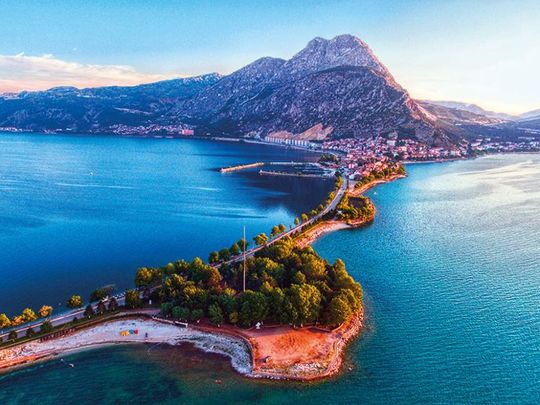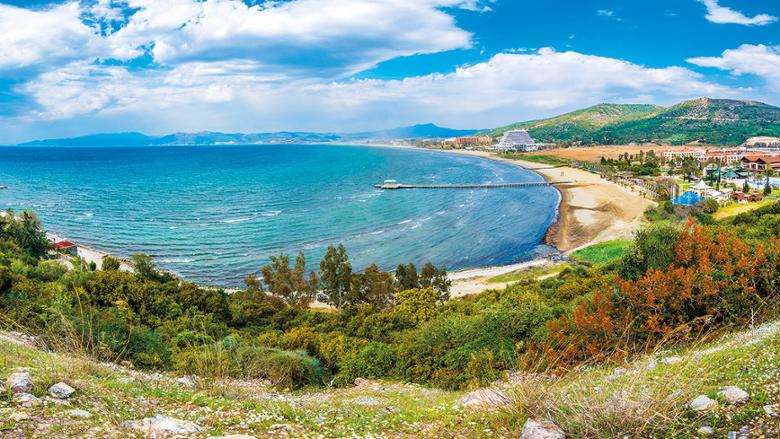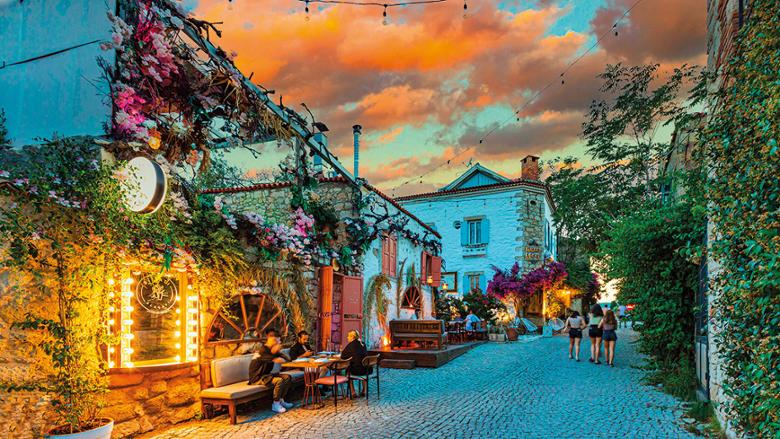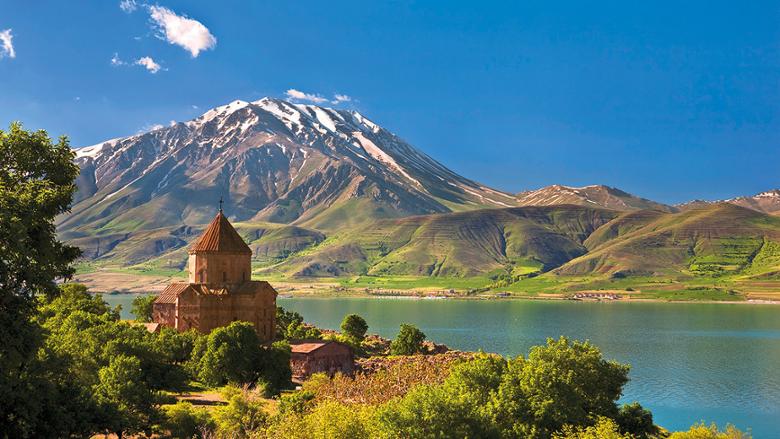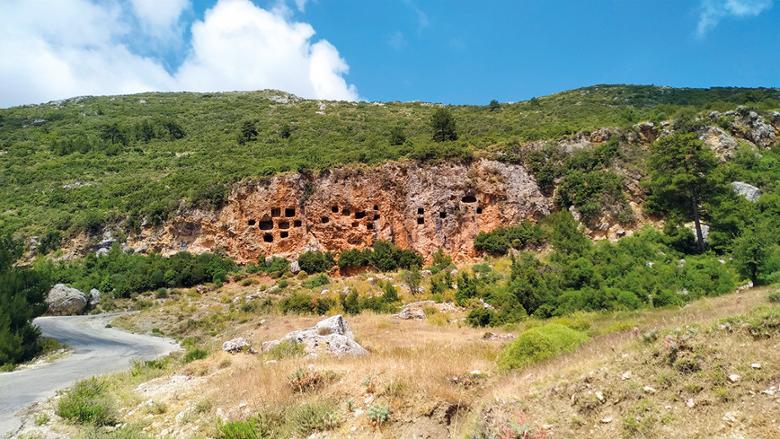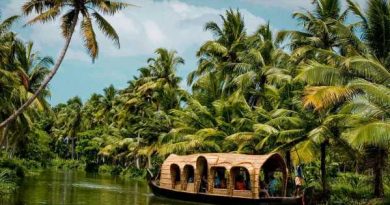Turkey’s must-visit hidden gems
It’s not hard to see why Turkey, according to the United Nations World Tourism Organisation, has risen to fourth place in the world tourism rankings. Summer sunshine is guaranteed on the Aegean and Mediterranean coasts, with the gateway resort of Antalya’s daytime July highs averaging 34C, and sea temperatures an inviting average of 28C in the same month.
Beaches abound, often set against dramatic backdrops of pine-forested mountains. Then there’s the fantastic array of ancient ruins to explore, from St Paul’s Ephesus to Homer’s Troy, the majority of which are easily accessible from the coast. Water sports from scuba diving to kitesurfing, kayaking to windsurfing, entice the active. The cuisine, too, is superb, with a dazzling range of mezze, succulent charcoal-grilled kebabs and syrupy walnut- and pistachio-stuffed baklava.
Turks have turned tourism into an art form, with hotels and guesthouses almost always extremely well run, chefs skillful and proud of what they do, and staff generally attentive and friendly. It doesn’t hurt that Turkey’s Ministry of Culture and Tourism oversees the industry. With tourism revenues making up some 12 percent of the country’s GDP it’s of national importance that holidaymakers are well served and become – as many do – regular visitors.
And the best news? Despite the huge number of visitors Turkey receives, this is such a big country (the size of France and Germany combined) with such an extensive coastline (the third longest among countries bordering the Med) that there are still plenty of unspoilt, hidden gems where you can avoid the crowds of Antalya, Marmaris and Bodrum. Here are 10 less-discovered places to visit this summer.
Lake Eğirdir
The shimmering blue expanse of Turkey’s second largest freshwater lake is ringed by mountains. Its natural hub is the modest market town of Eğirdir and the small island just off it, linked to the mainland by a causeway. Highs rarely exceed 30C and humidity is low, so walks along the long-distance St Paul Trail running by the town are pleasant, as are swimming, fishing trips, kayaking and windsurfing. Nearby are the incredible mountain-set Greek-Roman ruins at Sagalassos and the equally evocative remains of Antioch in Pisidia, while there are plenty of low-key family-run pensions and guesthouses to stay in.
Faralya
Most of the houses in this scattered hamlet, set among terraced fields layered down the dramatic slopes of 6,500ft-high Baba Dağ (Father Mountain), enjoy spectacular views over plunging limestone cliffs to a Mediterranean Sea of the deepest blue. Tucked into a cleft below the village is Butterfly Valley, famed for its pretty beach and – you guessed it – dazzling butterfly population. Faralya is linked to the nearby resort of Ölüdeniz by dolmuş (minibus) and taxi, though you will need a hire car to explore ancient sites such as Tlos and Xanthos. The village also lies astride renowned long-distance walking trail the Lycian Way.
Pamucak
A few miles north of the cruise ship port of Kuşadası and the same distance west of the delightful inland town of Selçuk is Pamucak, one of the longest stretches of beach on the Aegean coast. Its soft sand backed by wetlands home to flamingos attracts more locals than visitors, in part because access is free. Its southern reaches are being encroached upon by hotels but many visitors prefer to base themselves in Selçuk and mix days on the beach with exploring the region’s wonderful array of ancient Greek ruins, including Ephesus, Priene and Miletus.
Çıralı
Çıralı’s protected status, earned because of its nesting loggerhead turtles, atmospheric ancient ruins of Olympos and the geological wonder of the eternal flames of the Chimaera, have shielded it from the excesses of all-inclusive development along the coast at Kemer. The two mile-long curve of sand and shingle beach, mountain backdrop and sea of citrus groves concealing a myriad of simple pensions make this a supremely peaceful place, especially as it is set at the end of a dead-end road so there’s no through traffic.
Alaçatı
On the radar of discerning Turks rather than tourists, the former Greek fishing village of Alaçatı is today a hip destination of bars, restaurants and boutique hotels fashioned from old stone houses. It‘s also one of the premier wind- and kite-surfing locations in the Med, with its sandy beach shelving gently into a shallow bay usually caressed by a steady southerly wind. A day trip to the nearby Greek island of Chios makes for a fine day out, as does the largest and best-preserved of the many ancient Greek-Roman cities littering Turkey’s Aegean littoral, Ephesus.
Uçhisar
The bizarrely beautiful central Anatolian region of Cappadocia has soared in popularity in recent years, unsurprising given its unique volcanic landscape of weirdly eroded rock spires, mesas, deep gorges, snow-clad volcanoes and fresco-adorned rock-cut Byzantine churches. Some 3,000 feet higher than coastal Turkey, it’s cooler and less humid, making exploration of this unique landscape a joy. Uçhisar village, clustered around a 200ft-high rocky citadel, has largely avoided the development marring nearby Göreme and offers superb views across the strange but sublime Cappadocian landscape.
Lake Van
For a truly adventurous experience head out to high-altitude Lake Van near the Iranian border. An azure sheet of blue, Turkey’s largest lake is ringed by snow-streaked mountains soaring to 13,000 feet and dotted with remains of its Urartian and Armenian past. Swimming in the buoyant, soda-rich waters of the lake is a joy, the boat trip out to Unesco-listed Akdamar island and its splendid church an unforgettable experience, a walk through the abandoned old town of Van at the foot of its ancient citadel rock haunting. Van breakfasts are deservedly renowned – eggs fried with lamb, herb-infused goat cheeses, clotted cream, honey and much more.
Foça
Foça, with its old Greek fishermen’s houses, has retained a timeless air despite being located only 50 miles from Turkey’s third biggest city, Izmir. In addition to the town’s pretty harbour and Byzantine-era fortress, there are several fine (pay) beaches on the scenic road north to Yeni (New) Foça.
Assos
A tiny waterfront hamlet beneath a stunning ancient site of the same name and overlooking deep blue waters separating it from the Greek island of Lesbos opposite, Assos is a magical place, as is the old stone village of Behramkale above it. Classicists will love it for ancient Assos, complete with stunning Temple of Athene, close-by Alexandria in Troas and Homer’s Troy, the latter a 1.5-hour drive away.
Islamlar
Leaving the broiling shores of the summertime Mediterranean behind and heading up to cooler altitudes is the traditional way to do things in Turkey. Islamlar, perched high in the limestone mountains behind Kalkan, is cooled by a combo of altitude, tumbling streams and greenery. It’s only a short drive down to the superb beach at Patara, the restaurants of Kalkan, or up to the beautiful scenery around the almost 10,000 feet-high Gömbe Akdağ.
The Daily Telegraph
Read more
- Best places for holiday on a budget
- 10 ways to enjoy Australia
- Small bites, big taste: New experiences await in Spain
Source: Read Full Article
